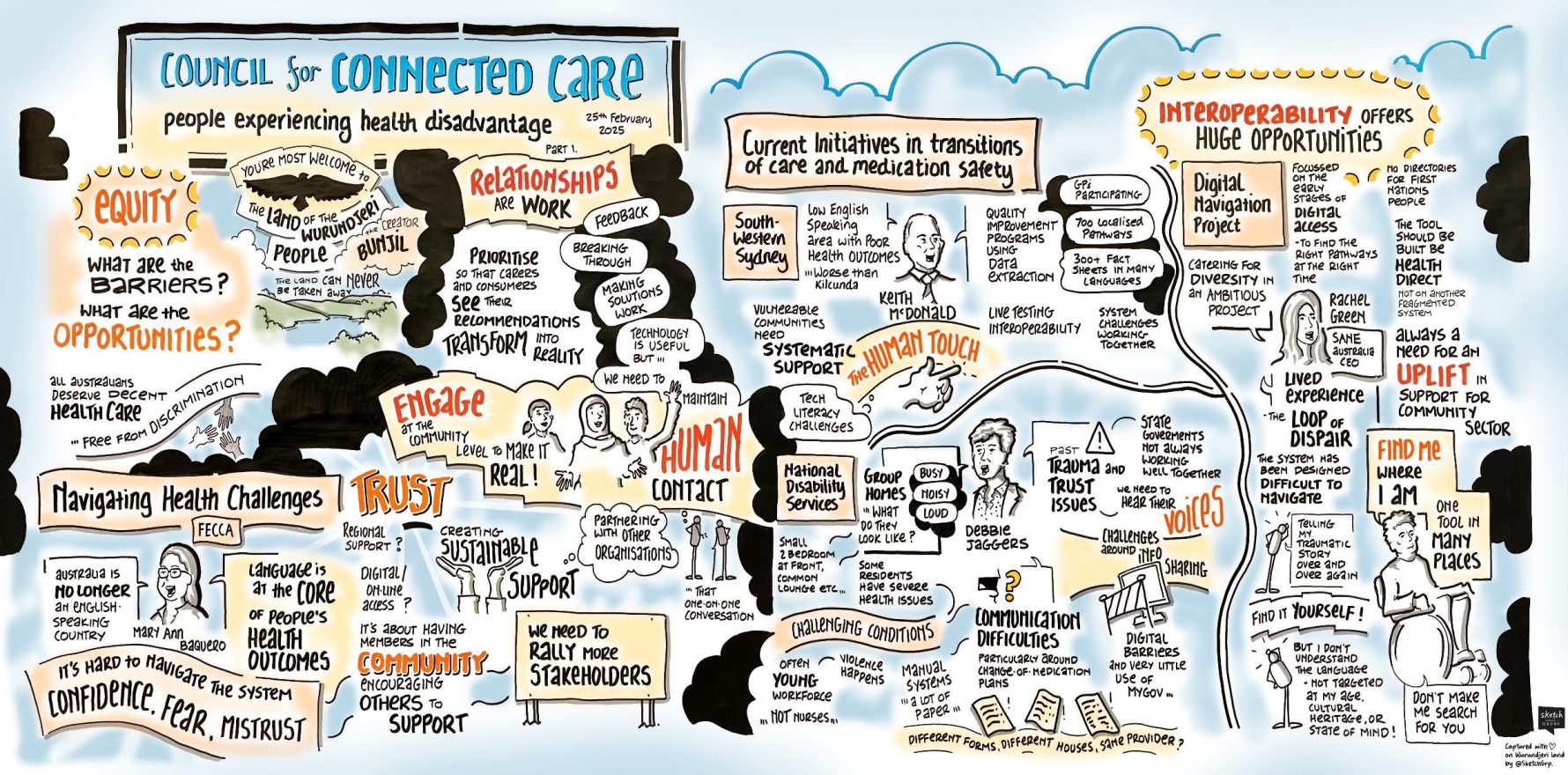NSW health consumers are barely aware what the SDPR is and when it’s being implemented, says a new report. They want more control and more consultation.
The Single Digital Patient Record Implementation Authority has a communication problem, according to a new report produced by Health Consumers NSW.
As late as November last year, HCNSW found that “most of the health consumers and consumer organisations we spoke to were not aware that the SDPR was being planned”, said the recently released report.
“They told us that NSW Health had not provided enough information and communication for consumers and the broader community.
“Consumers and consumer organisations emphasised the need for clear, simple, and accessible information about the SDPR that can be easily shared with their members and networks.”
The SDPR IA is run by eHealth NSW.
Health Consumers NSW believes the rollout of the SDPR across the state is in danger of happening without adequate consultation with patients, and with unanswered concerns around privacy, security and potential impacts on people who experience stigma and discrimination in healthcare.
HCNSW has made 21 recommendations about the implementation of the SDPR, in the hopes of ensuring that consumers have a more active role.
“[We are] supportive of any system that will allow healthcare providers to access a more complete picture of a patient’s medical history, including hospital stays, outpatient engagements, scans, tests, and specialist visits,” said the group.
“Health consumers in NSW hope that the scope of the SDPR will eventually include GPs, allied health, private, and NGO providers.
“Many of HCNSW’s members, consumer leaders and consumer organisations are concerned at the lack of information they have received about the SDPR and its implementation.
“There is disappointment at the limited consultation to date, with key consumer organisations seeking more information now, rather than having been proactively brought into discussions sooner.”
The SDPR will be an electronic record that brings together patient information currently held in different parts of NSW Health.
US-owned software company Epic has been chosen as the provider of the SDPR with information stored on NSW-based servers, with Amazon Web Services playing a role in the process.
Related
Following consultation with their members, HCNSW said consumers want more details on the types of information that will be included in the SDPR, how the system will work in practice, privacy and security measures, patients’ rights and control over their medical records, and the implementation timeline and process.
The rollout of the SDPR will be done in five phases, with completion due by mid-2028. The first stage, beginning in 2026, will include the Hunter New England LHD, Justice Health and LIMS North (HNE only).
Tranche B, in late 2026 will involve Northern NSW LHD, Mid North Coast LHD, Northern Sydney LHD, Central Coast LHD, and LIMS North (rest of network). Tranche C, in mid 2027, will involve South Eastern Sydney LHD, Illawarra Shoalhaven LHD, LIMS East, Sydney Children’s Hospital Network, and SCHN LIMS. Tranche D, in late 2027, will involve Sydney LHD, South Western Sydney LHD, Western Sydney LHD, Nepean Blue Mountains LHD, LIMS South, LIMS West (WS, NBM only), and Forensic and Analytical Science Service. Tranche E, in mid 2028, will involve Far West LHD, Western NSW LHD, Murrumbidgee LHD, Southern NSW LHD, LIMS West, Regional and Rural (rest of network).
“It is noted that the existing SDPR newsletter appears to be aimed at people within NSW Health,” said HCNSW.
“Links in the newsletter are mostly to sites on the internal NSW Health intranet, inaccessible to those outside the system.
“The lack of up-to-date information leads to confusion and speculation, especially in areas where decisions are yet to be made.”
The 21 recommendations made by HCNSW include:
- SDPR IA co-design a communication strategy and resources for SPDR and its implementation with consumers and consumer organisations;
- Provide consumer leaders and consumer organisations with opportunities to walk through demonstration of how the SDPR works, including: how consumers will experience the patient portal, and what clinicians experience when they use SDPR;
- That updates on the implementation of SDPR be made easily available to consumers and consumer organisations;
- That HCNSW be resourced to support SDPR IA to establish and maintain ongoing consumer engagement processes and structures, including regular consultations and feedback mechanisms, with consumers and consumer organisations outside of existing NSW Health engagement structures;
- That SDPR IA ensure the involvement of a diverse range of consumer groups and organisations, particularly those representing priority populations and those with specific health needs;
- That the SDPR IA develop strategies and structures to ensure consumers are part of the ongoing governance of SDPR, during and after its implementation;
- That the process for people to be able to access their full medical record, as held in the SDPR, be easy, timely and free, and co-designed with consumers;
- That the process by which consumers can correct inaccuracies in the SDPR be easy and timely and co-designed with consumers;
- That the SDPR has the capacity to have fields for preferred name and gender, alongside legal name;
- That SDPR has the capacity for reception and administrative staff, who interact with patients and carers, to easily update fields such as preferred name and gender;
- That reduction of stigma become a high-level aim of SDPR;
- That health services continue to be able to provide services anonymously;
- That training on stigma reduction and the potential impact SDPR has on stigma in health care, be integrated into implementation strategies and staff training;
- That clear guidelines for the ‘break the glass’ function be co-designed with consumers and consumer organisations;
- That people are informed when their SDPR records are accessed, updated or changed, and by whom;
- That people are notified if their SDPR records are inappropriately accessed;
- That there are severe consequences for people who access SDPR inappropriately, including dismissal, loss of clinical registration, and reporting to law enforcement;
- That consumers are informed when and who “breaks the glass” on their record;
- That public reporting on SDPR includes updates on how often the “break the glass” function is used, the circumstances and services that use it, and the impact on patient outcomes (including patient reported outcomes);
- Health Consumers NSW and other consumer organisations co-design, with the SDPR Implementation Authority, the evaluation process for SDPR; and,
- That HCNSW and other consumer peaks in NSW be adequately resourced to continue support consumer engagement of SDPR in NSW.
Read the full Health Consumers NSW report here.





